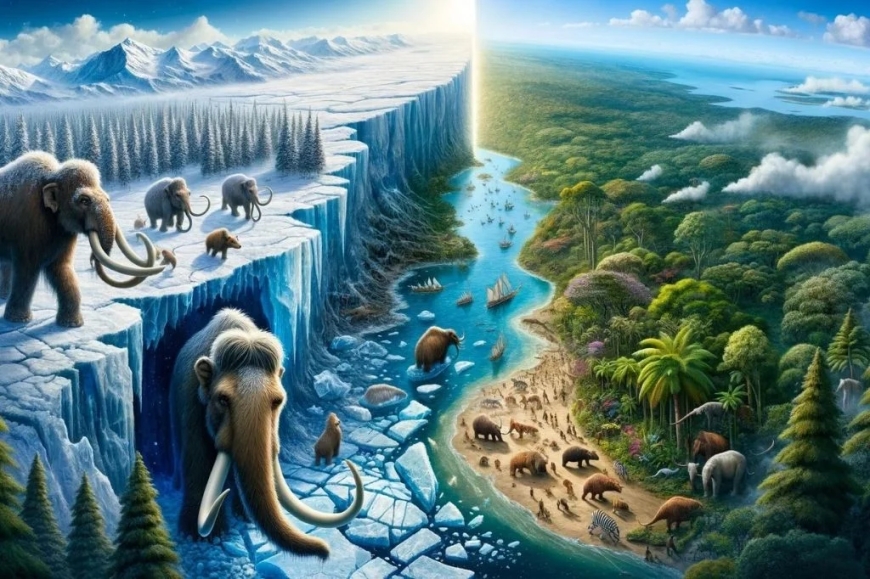Did the Ice Age Affect the Whole World?

The concept of an Ice Age brings forth images of a world encased in ice, where mammoths roam and humanity’s ancestors grapple with a harsh, frozen landscape. This begs the question: did the Ice Age affect the whole world? The answer is a fascinating journey through time, unraveling the impacts of the Ice Age on different regions of our planet.
The Global Reach of the Ice Ages
The Ice Ages, a series of glacial periods, had a profound impact on the entire globe. It’s a common misconception that the Ice Age was a singular event; in fact, there have been several Ice Ages throughout Earth’s history. The most recent, the Pleistocene epoch, started about 2.6 million years ago and ended around 11,700 years ago.
During these periods, large parts of the world were covered by thick ice sheets. The most affected areas were the northern continents like North America, Northern Europe, and Asia. Here, ice sheets could be up to 2 miles thick, dramatically reshaping the landscape.
- Effects on Global Climate: The Ice Ages led to cooler global temperatures, even in areas not covered by ice. This global cooling affected ecosystems and wildlife significantly. Many species had to adapt, migrate, or face extinction.
- Sea Levels: With vast amounts of water trapped in ice, sea levels were significantly lower during the Ice Ages. This exposed continental shelves and created land bridges, like the famous Bering land bridge between Asia and North America.
- Human Evolution: The Ice Ages were a crucial period for human evolution. The changing landscapes and climates played a key role in human migration and development. Adaptation to these conditions may have driven early humans to develop crucial survival skills.
Regions Unaffected by Ice Cover
While vast areas of the world were under ice, some regions remained ice-free but were still affected in other ways.
- Equatorial Regions: Areas near the equator experienced a much milder impact. These regions remained largely ice-free, though they experienced cooler temperatures and changes in precipitation patterns. This altered ecosystems and influenced the types of vegetation and animal life that could survive in these areas.
- Deserts: Interestingly, some deserts like the Sahara were more hospitable during the Ice Ages. Evidence suggests that these regions had more vegetation and water sources, supporting a variety of life forms.
- Islands and Remote Regions: Some remote islands and regions far from the ice sheets experienced less direct impact. However, they were not entirely insulated from the broader climatic changes that were occurring globally.
Post-Ice Age Legacy
The legacy of the Ice Ages is still visible today in various forms.
- Landscapes: The immense ice sheets carved out valleys and lakes, leaving behind a dramatically altered terrain. Features like the Great Lakes in North America are remnants of this glacial activity.
- Sea Levels and Coastlines: As the ice melted at the end of the Ice Ages, sea levels rose, submerging land bridges and reshaping coastlines. This rise in sea levels had significant impacts on human migration and settlement patterns.
- Biodiversity: The Ice Ages played a crucial role in shaping the distribution and evolution of species. Many animals and plants that thrived during the Ice Ages became extinct or evolved into forms we see today.
The question, did the Ice Age affect the whole world, opens up a rich narrative of Earth’s history. The Ice Ages were not just periods of extensive glaciation; they were catalysts for significant environmental, biological, and geological changes. Their impact was indeed global, affecting different regions in diverse ways, and the legacy of these Ice Ages continues to influence our planet’s landscapes and ecosystems.
What's Your Reaction?





































